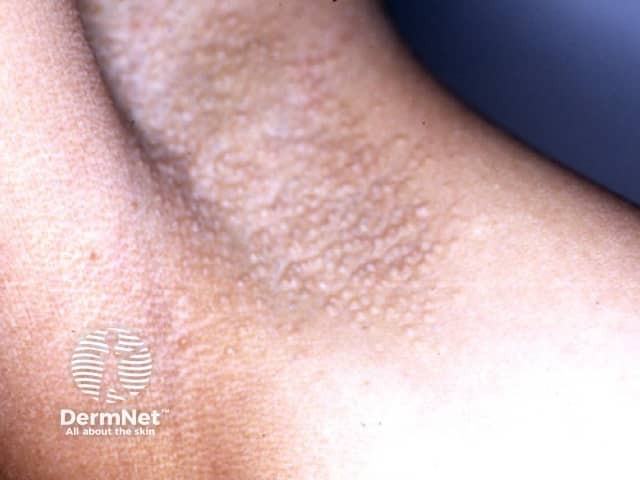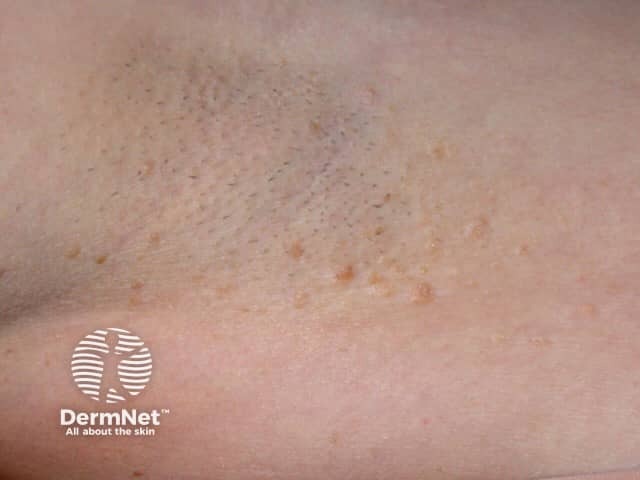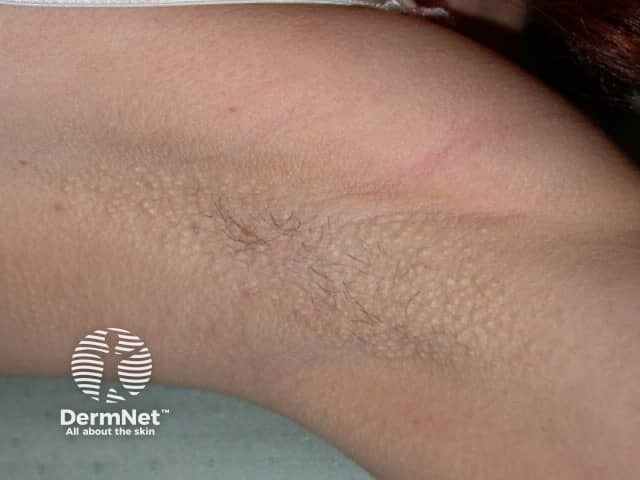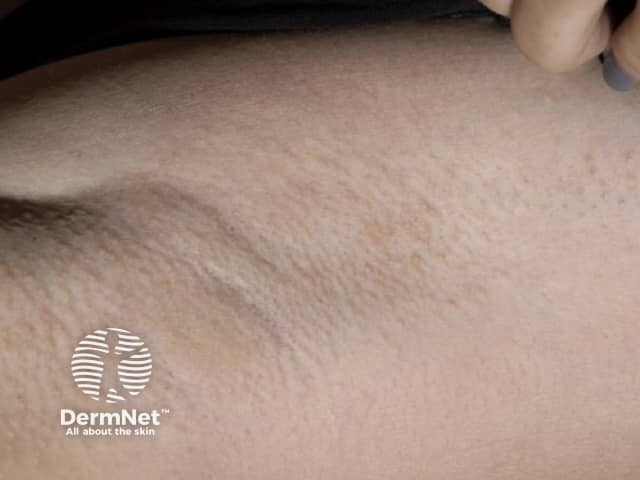Main menu
Common skin conditions

NEWS
Join DermNet PRO
Read more
Quick links
Author: Vanessa Ngan, Staff Writer, 2005. DermNet Update July 2021
Introduction Demographics Causes Signs and symptoms Diagnosis Treatment Outcome
Fox-Fordyce disease is a rare skin disorder in which apocrine sweat is trapped with resultant inflammation. It is also called apocrine miliaria, apocrine duct occlusion, and sweat retention disease.
Fox-Fordyce disease mainly affects post-pubertal women between the ages of 13 and 35 years. Children and males are sometimes affected.
The cause of Fox-Fordyce disease is unknown. Apocrine sweat becomes trapped by a keratotic plug in the hair follicle. The apocrine sweat ducts within the epidermis rupture and leak to cause inflammation and intense itch.
Factors identified as playing a part in the development of the condition include:
Fox-Fordyce disease is characterised by itchy bumps around the hair follicles of the underarm area, pubic region, and around the nipples as apocrine sweat glands are found only in these areas.
Fox-Fordyce disease may result in very intense itch that disturbs sleep, but in some cases is asymptomatic. The condition frequently occurs under conditions of heat, humidity, friction, and stress.
Common clinical signs of Fox-Fordyce disease include:




Fox-Fordyce disease is usually diagnosed on the history and clinical appearance of the rash.
Skin biopsy may require serial sectioning to demonstrate the characteristic histology findings of:
There is no cure for Fox-Fordyce disease. Treatments used with variable degrees of success include:
Fox-Fordyce disease may persist for many years. In some instances, it may clear up in pregnancy. In others, it may resolve at the menopause or continue to persist.